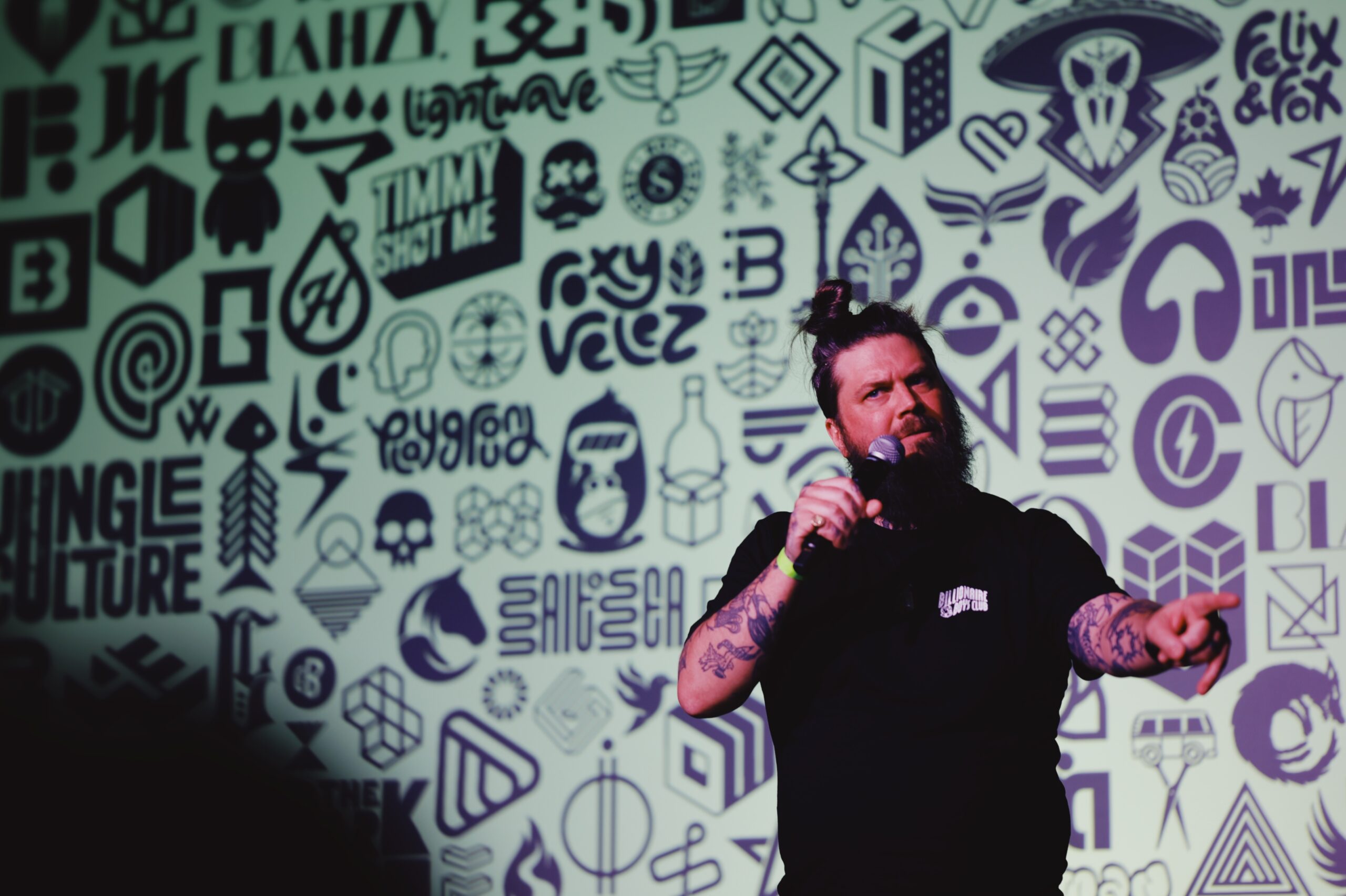You’ve been in the design industry for over 20 years. What inspired your shift from client work towards focusing on educating and mentoring designers?
I am always eager to take on new challenges and believe my mission for the next 20 years is to infuse realism and honesty into design education. I grew up in a design environment that valued craft, patience and perseverance. However, social media has led a generation to believe that these qualities no longer matter. Many now focus on meaningless productivity rather than meaningful action. The proliferation of AI prompts, outdated college curriculums and productivity hacks from design influencers fail to prepare real designers for the real world. I believe that if I can help designers navigate the unpredictability of dealing with actual clients, the predictable aspects of design will become second nature.
Where does traditional design education fall short? How is your approach addressing these gaps?
Traditional design education often emphasizes theoretical knowledge over practical experience. While students may graduate with strong technical skills, they often struggle to apply these skills in real-world situations, particularly when dealing with clients and project constraints. The curriculum focuses heavily on essential elements such as typography, portfolio development and the history of design. Although this foundational knowledge is important, the curriculum insufficiently addresses communication, soft skills and the unpredictable traits that define a successful professional in the real-world design industry. Furthermore, there is limited emphasis on entrepreneurship, leaving graduates unprepared for the multifaceted roles they must assume to stand out in a competitive field.
Shifting to brand design, can you share a bit about a pitch that went really well? What was your biggest takeaway from it?
I have never pitched for work. To me, the idea of giving away a load of ideas for free, especially when competing against five others also working for free, has never made sense. There only ever seems to be one winner in these scenarios, and it’s rarely the design teams pitching. My biggest takeaway for anyone reading this is that you can build a successful and fulfilling design career without ever needing to pitch for work. Instead, I’ve always focused on becoming a niche. My strategy revolves around creating a pull towards my services, rather than pushing my services onto others. While pitching can be effective for some, it’s not a path I have personally aligned with.
You have over 750k followers on Instagram! Your community is engaged and you’re always sharing content that’s both entertaining and useful. In your experience, what makes a designer worth following? Do you have advice for designers who want to share more of themselves and their work online?
Firstly, remember that no one will remember you on your deathbed for having an Instagram following, so don’t measure your success by audience size. Many successful designers aren’t even present on social media. However, social media can be a great way to connect with others and establish yourself as a consistent contributor to the design community.
Always remember why you’re sharing your work. Is it to attract clients? To educate others? Knowing your purpose is crucial. Storytelling and offering value are effective ways to engage with your audience. Finally, keep in mind that no one cares as much as you do. Done is better than perfect, so just post your work and move on.
This year’s conference theme is “Into the Rabbit Hole.” Is there any topic or idea that you’ve been diving into lately?
Human behaviour is my constant obsession. Understanding the biology and reasoning behind our choices and actions absolutely fascinates me. One of the main reasons I want to dive deeper into the education space is because many people adopt a one-size-fits-all approach to pricing, selling, creativity, and business. They often believe their way is the only correct way.
By learning more, I’ve embraced a one-size-fits-one approach, which has profoundly benefited me as a designer, educator and human. Recognizing that everyone I meet is different makes the idea of treating them all the same feel ludicrous.










